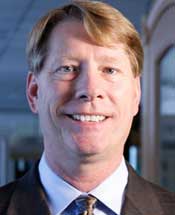Changing Facility, Employee Counts
Q: It’s my understanding that you have about 100 branches now?
A: It’s 97.
Q: And the number of employees right now.
A: Probably 3,500. We still have some businesses for sale that will close at the end of this month, so the real employee count today is probably 1,500 higher than that.
Q: In the case of the Connecticut, Wisconsin and New York markets, do you actually get money out of those sales?
A: There’s a purchase price for inventory and equipment, and then the receivables we either keep or we negotiate.
Q: Was all the land rented out there?
A: Everything was leased.
Rebates
Q: One of the things that a lot of other people are interested in has to do with your rebate policy. In your Chapter 11, it was clearly stated there was a certain amount of money every month that was going to rebates to builders for making purchases. Do you still continue to give rebates?
A: Yeah. I would say that we let that happen at the market level for the most part. We did have some national builder programs. Most everybody does.
What We Do Well, How We Can Improve
Q: What is your unique selling proposition?
A: We’ve got a good financial position for our customers. We’ve got the best associates in the industry. We have a renewed focus on our markets. That doesn’t mean we don’t have gaps. Certainly as we grew we lost nimbleness in the markets, and now we have to put that back. We are doing a thing called “The Stock Way,” in which we ask “How do we drive consistency? Not how we drive one approach, but rather how do we drive consistency of approaches so we perform better in the market?”
Q: Can you give an example of how a process could be improved?
A: I’ll talk about the sales process. Quite honestly we have found that our outside sales reps spent a lot of time chasing paperwork. We’re pretty decentralized in markets on takeoffs, so what we have been doing in markets is centralizing sales support, beefing that up where necessary. Adding someone that all they do is prospect and then turn those leads over to OSRs. In any business there’s always room for improvement.
Q: (Let’s take) centralization vs. how big the head office is, how big the regional offices are. Critics have argued that you were top-heavy. I’m not sure whether you felt you were top-heavy, although you did say SG&A was pretty high. How would you define your goal in the future for central staff people in district, regional or national offices vs. the local sites?
A: I think you have to look function by function and what makes the most sense. Let me give you an example of shared services. For us, we think the most efficient way to process payables and a lot of cash applications is through a shared services group. We do that at one place in the country. That does make sense. When you talk about inside sales support, that has to be in the markets. It’s a balancing act. Certainly when you get to be a $6 billion organization, you’ve got a lot of things going on between training and recruiting and you name it. Suddenly you have gained a lot of size in functional areas. For sure over the last 36 months we’ve lost a lot of that size.
Q: I don’t know how many districts or regions you had, but how many do you have now?
A: We’ve gone from a district structure to market structure, so we’ve taken out a layer of management. We’ve really kind of collapsed the organization, which had 3,500 associates and a $1.1 billion run rate. We’ve restructured in 19 markets, and half of them report directly to [SVP and COO] Steve [Short] and half report to a VP that reports to Steve. The central group’s role here is to provide support. That’s it, whether it’s payroll–all the basic things. Our customer is those 19 markets.



